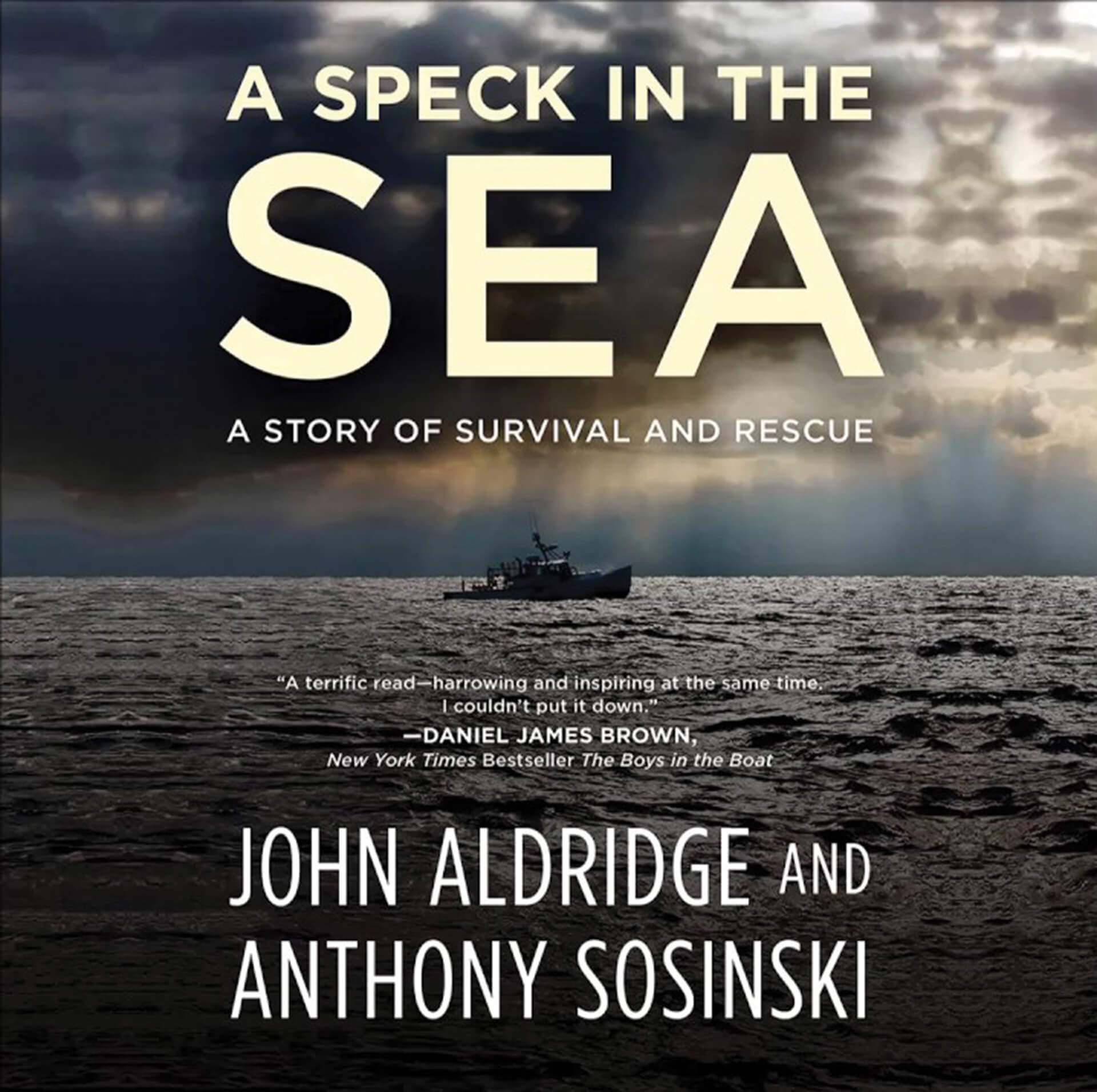A Speck In The Sea


With apparently no irony about the word “current,” an epigraph (one of three) to this well-told tale of ocean survival and rescue off Montauk notes that on the very day 45-year-old John Aldridge fell from his beloved classic down-east lobster boat the Anna Mary in the middle of the night, on July 24, 2013, the horoscope for him in his former hometown paper in Oakdale, read: “You are strong and you are resilient . . . you will have the strength to survive the current circumstances.”
“Johnny Load,” as he was known to locals around the Montauk docks, where he and his longtime fishing partner, co-captain, and childhood friend “Little Anthony” plied their lobster trap and trawling business, was indeed strong and resilient during his 12-hour ordeal in the shark-infested Atlantic, with only boots and a three-inch knife by his side.
He tells his harrowing story in a series of dramatic first-person chapters that alternate with fascinating third-person accounts of the extraordinary coordinated rescue “assets” on land, sea, and in the air that set out to find him, despite the odds that only his body might be recovered (he was not wearing a life vest).
It’s an incredible story (celebrated by Nancy Atlas in her ballad “The Tale of Johnny Load”), not only because Aldridge beat the odds. Some East End residents may not know about the close-knit fishing community that defines Montauk or about the U.S. Coast Guard’s resources and personnel, including those at the air station in Cape Cod.
When a “Mayday” distress call comes in — the word comes from the French m’aidez [help me] — the Coast Guard kicks into action with surprising speed and the latest technology, though the Montauk fishermen prefer to rely as well on LORAN (long range navigation), local jargon, and their instincts.
Aldridge was propelled off the boat through an aft opening when a plastic handle he had been pulling on broke. The official search by the Coast Guard with its Search and Rescue Optimal Planning System (which at one point went down!) was assisted by an outpouring of volunteers — family, friends, local business people, just about the entire town of Montauk.
The lore alone on Montauk makes the story engaging. How many East Enders know that Montauk Harbor is unnatural? That it was part of the abortive vision of real estate developer Carl Fisher in the 1920s who wanted to turn Montauk into a northern version of Miami Beach? That it became an important Navy station during WWII and is now “home base for the state’s largest commercial and recreational fishing fleets”?
The book is also memorable for what it says about Johnny and Anthony, so different in looks and behavior but united in their total love of their job. It’s also impressive testimony to Johnny’s unbelievable will. He determined his own strategy in the water, at odds at times from what the Coast Guard was doing.
The book also celebrates the tightness of the Montauk fishing community and of Montauk, “a tough place” to live, and provides, with reason and persuasiveness, an assessment of the continuing debate about overfishing and regulations.
At its heart, however, the book is a look at what Johnny and Anthony do as Montauk fishermen. Alone among the five boats in the Montauk fishing fleet that comprises 40 or some vessels, the 44-foot Anna Mary is the “only one that fishes out of sight of land,” far out in the Atlantic. But the guys love the work, it’s in their blood. They can’t conceive of ever doing anything else (though they tried). In this sense their tale is nostalgic, Johnny and Anthony being perhaps “the last of their breed.”
The National Institute for Occupational Safety and Health notes that fishermen have a “fatality rate 39 times higher than the national average.” Data also show that the waters off the northeast coast are “the most dangerous fishing grounds in America — more so than the Bering Sea.” It’s rare that men and women work as Johnny and Anthony do, lone individuals who determine their own destiny.
The authors thank their publisher and staff who helped them put together a suspenseful narrative. You know Johnny survived, but your pulse rate and heart respond to the pace. Literary folks will spot allusions, e.g., Johnny and Anthony continue to this day as an example of “the marriage of true minds” [Shakespeare sonnet 116].
The prose is remarkable, especially for debut writers. Passion can do that. So can faith and thanksgiving.



